Pony tales and enchanted forests Mythical herdsmen, mutilated equine featured in art exhibit exploring dark folklore
Read this article for free:
or
Already have an account? Log in here »
To continue reading, please subscribe:
Monthly Digital Subscription
$0 for the first 4 weeks*
- Enjoy unlimited reading on winnipegfreepress.com
- Read the E-Edition, our digital replica newspaper
- Access News Break, our award-winning app
- Play interactive puzzles
*No charge for 4 weeks then price increases to the regular rate of $19.00 plus GST every four weeks. Offer available to new and qualified returning subscribers only. Cancel any time.
Monthly Digital Subscription
$4.75/week*
- Enjoy unlimited reading on winnipegfreepress.com
- Read the E-Edition, our digital replica newspaper
- Access News Break, our award-winning app
- Play interactive puzzles
*Billed as $19 plus GST every four weeks. Cancel any time.
To continue reading, please subscribe:
Add Free Press access to your Brandon Sun subscription for only an additional
$1 for the first 4 weeks*
*Your next subscription payment will increase by $1.00 and you will be charged $16.99 plus GST for four weeks. After four weeks, your payment will increase to $23.99 plus GST every four weeks.
Read unlimited articles for free today:
or
Already have an account? Log in here »
Hey there, time traveller!
This article was published 22/06/2018 (2735 days ago), so information in it may no longer be current.
Challenging and inspiring the sensibilities of the viewer is something Winnipeg visual artist Diana Thorneycroft has always done with her photographs and drawings in her 30-plus year career.
And she continues to do so with recent projects such as her collaboration with partner Michael Boss on his book, The Talking Crow, which features her drawings of its three main characters — a crow, a bear and a mouse. The drawings are based on art historical paintings by Otto Dix (Portrait of the Journalist Sylvia von Harden), Frida Kahlo (Self-portrait with cropped hair) and Edourd Manet (Le Fifre).

More recently, some of her drawings were shown at Cre8ery Gallery as part of The Frost Shield Kerfuffle collective’s first exhibition, The Only Thing We Have in Common is That Some of Us Are Nice.
Thorneycroft’s latest solo exhibition, Black Forest (dark waters), will open June 28 at the Art Gallery of Southwestern Manitoba in Brandon. The exhibition brings together two of Thorneycroft’s most recent bodies of work, Herd and Black Forest (dark waters) to explore the mythology of the Black Forest, setting the stage between the dynamic themes of power, violence, ritual, desire and care.
“With all the recent work I’ve done, it feels like I’m doing my best work ever,” she said.
The interview was conducted via email.
Q: What can you tell us about your upcoming installation, Black Forest (dark waters), at the Art Gallery of Southwestern Manitoba?
A: The installation is now made up of three components. The first is a suite of 18 photographs that depict a dark and open-ended fairy tale narrative, the second is Herd; the 40-foot ramp covered with over 150 plastic toy horses, and the third is The Village; an 8×12’ area containing architectural constructions that house the herdsmen.
In the centre of the village square you will see members of The Phocomelia Drum Band being led by Carl, the blind conductor, and various other herdsmen watching them perform. Surrounding the border of the village, nine seated Birdmen attached to wooden poles, act as the village’s sentinels.
Many of the buildings in The Village will be familiar, as they appear in the photographs, like the Tongue-maker’s Workshop and the Shaman’s Hut. Some obliquely continue the narrative — for example, the ladder from the photograph Rain and Birches (in Fiddler’s Green) is being reused in Hugo’s Prison) – where as others, like The Vagina Dentata Storage Facility, introduce an entirely new storyline.
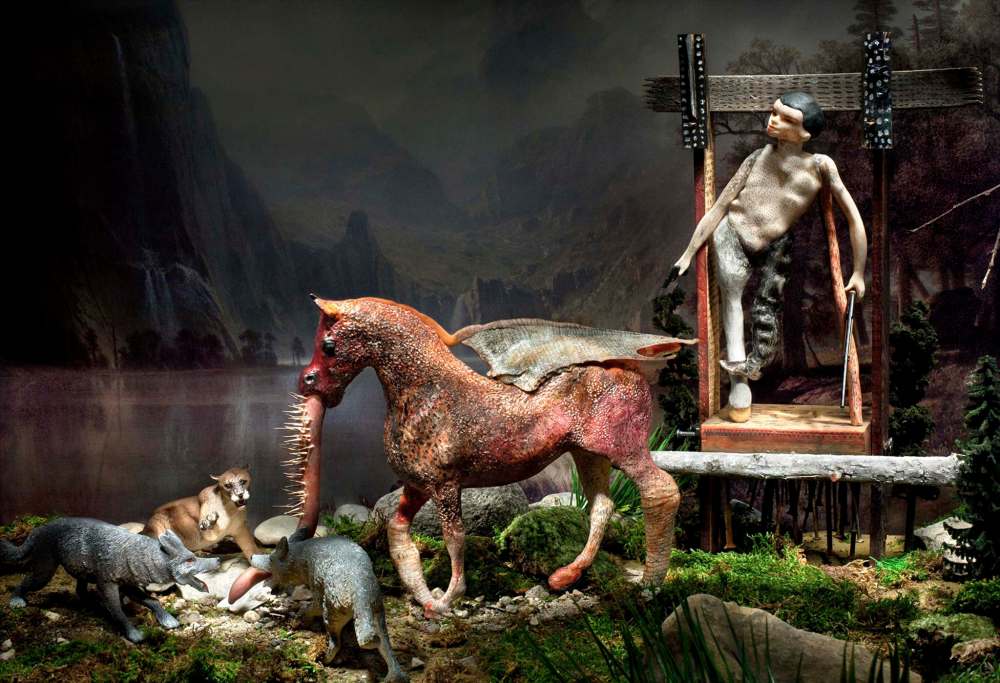
Q: Black Forest (dark waters) is a nod to the Black Forest in Germany, to the Brothers Grimm fairy tales or folklore and how you use light in your photographs. Could you speak about the time you spent as a child living with your family on a Canadian military base near Solingen, Germany? It’s clear that your time in Germany and exploring the Black Forest had a profound influence on your development as an artist.
A: Living within the protective confines of the “PMQs” (permanent married quarters) gave us a lot of freedom. I’m sure if our parents knew what we were up to once we “jumped the fence” that surrounded the base, they’d have put an end to our wild ways pretty quickly.
Once we were on the other side of the fence, my siblings and I would take our bikes deep into the woods of the Black Forest. There we would discover abandoned lookout towers, bunkers and trenches, and integrate them into our games.
I will never forget the mixture of emotions I felt: uneasiness because of the ruins’ history, fear because of the stories we’d been told, anxiety because we were disobeying our parents, awe because the dark forest was spectacular in its beauty, and sheer joy because we were having fun.
Understanding the uncanny (in the simplest of terms), as a mixture of fear and delight, I believe my endless play in the Black Forest is one of the reasons I am compelled to engage these complex and often contradictory emotions in my work. I am drawn to the grotesque for the same reason, as it too, is an oscillation between the oppositional feelings of attraction and repulsion.
Q: Black Forest (dark waters) has its origins in Herd, an art installation that you created and was exhibited at the Tom Thomson Art Gallery and the Ottawa School of Art Gallery in 2016.
For those who haven’t seen the installation, Herd is comprised of 150 plastic toy horses charging up a 40-foot ramp. Upon closer inspection, about half of the four-legged creatures have been mutated. Some have long and winding tongues, some appear to have been maimed — and repaired — beyond recognition.
Did you know early on when you were creating Herd that you would be creating an accompanying or follow-up photo series with these horses?
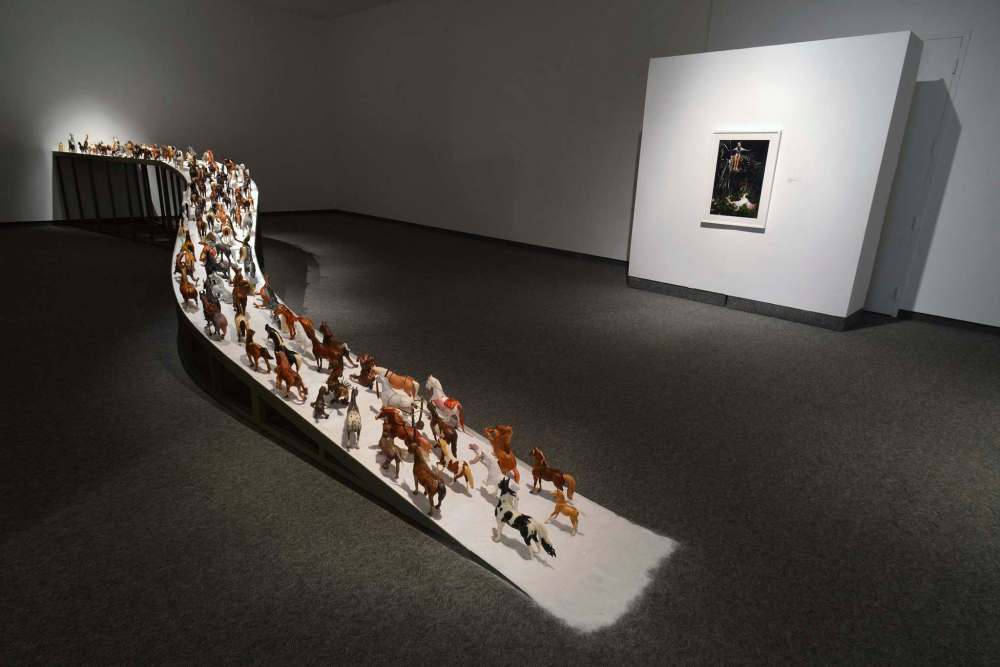
A: Yes, and no. Originally I had planned on creating staged tableau landscapes and photographing the altered horses within these artificial environments, but the resulting photographs didn’t turn out as I had hoped.
It was only when I started making the herdsmen that things started falling into place. Through their actions and their relationship to the horses, the semblance of a narrative — which was missing when the horses were all by themselves — began to unfold.
Q: The forest as a dangerous place for innocents and how fairy tales reinforced those perceptions are a couple of themes you explore in this project. Instead of using unaltered figurines and toy/miniature animals, you re-imagine these themes with deformed and mutilated toy horses and ponies and mutant humanoids you’ve described as the horses’ caretakers.
It’s striking to see the grotesqueness of the creatures in a setting of natural beauty. That contrast, that friction is palpable. It’s something that makes you think. You seem to have an affinity for contrasts and contradictions.
A: Yes, you’re right. It’s a conscious strategy that takes people to places they may not normally go.
Some people enjoy the seduction/repulsion experience, some not; it usually depends on their comfort level and how far they can be carried along.
Q: The relationship between the humanoids or herdsmen and the horses seem benevolent at first glance but as you look more closely at the images, there is a sense the relationship is not as it seems. Something more malevolent is implied but not outright stated.
This is one of the roles of fairy tales inhabit. The viewer is left to come to his/her own conclusion about what is happening or has happened in each image.
This is something that American academic and author Jack Zipes is well-versed on the subject of fairy tales, its evolution and its social political role in society. How much of his writing informed your work with Black Forest (dark waters)?
A: I’d like to say that I’ve read everything he’s ever written, but I haven’t. In fact, our local (and brilliant) fairy tale expert Pauline Greenhill, who teaches at the University of Winnipeg, introduced me to his writing just recently.

Q: I must admit I find your altered horses beautiful in their grotesqueness. I think of gargoyles (and I happen to love gargoyles) as the best comparison to these beasts and your humanoids.
A: The range of alterations I have made on both the plastic horses and figurines are quite wide. Some simply have textures added, whereas others are physically altered with heat, which changes their shape.
In many cases I’ve also cut off limbs and added prosthetics made from natural materials, like a rabbit foot, or a piece of wood with badger claws or man-made items, like nails or plastics. As much as I can I’ve also used bones, hair, teeth and claws from other animals.
In addition to the horses and herdsmen being grotesque, I also want them to embrace the uncanny, in that they are familiar and completely aberrant at the same time.
Q: Given the size of the figurines and the amount of detail you have for each setting in every image you make, how long does it take create one of these images? Let’s say from the moment an idea takes hold of your imagination to determining you have an image that is right for the series.
A: It really depends on how quickly things come together. Sometimes I can make a set, “document” it, and complete it using Photoshop within a week, but the average amount of time is three weeks to a month.
Occasionally it does take longer. For example, I recently completed two related photographs, to be shown as a diptych, entitled The Phocomelia Drum Band and The Blind Conductor. Each image contains components that slowly unfolded over two years: the mutant “ram boys”, their drums and sticks were made in 2016, their richly embellished chairs and pedestals in 2017 and finally the diorama, which incorporated a 4×6’ acrylic “painting” of simulated water, was done this past spring.
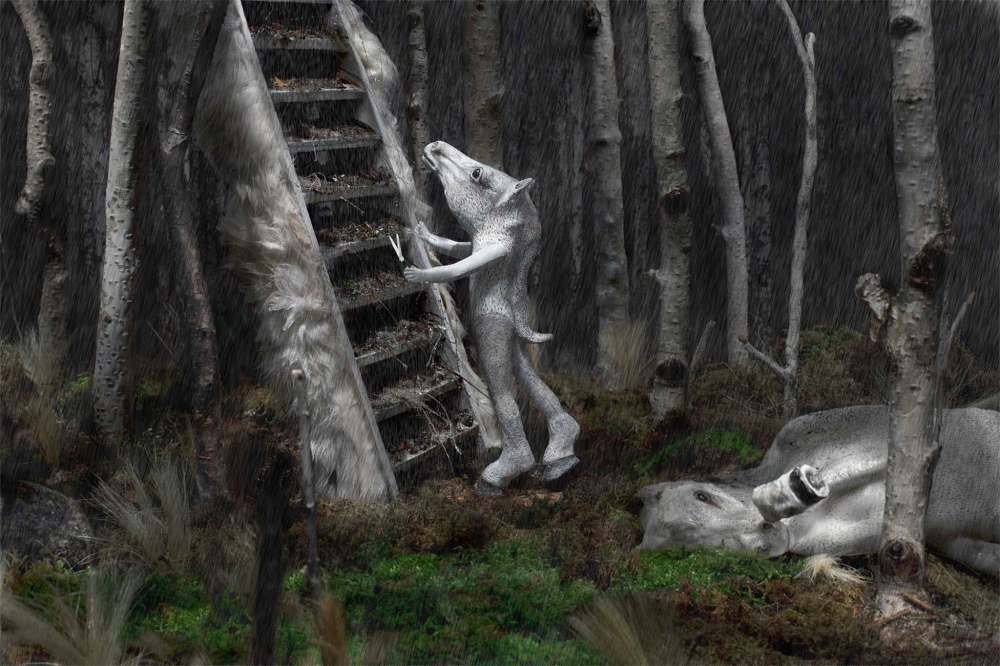
Q: The use of a handheld flashlight in Black Forest (dark waters) is reminiscent of your first work TOUCHING: THE SELF. The quality of light in your images is something I’ve always loved and identified with.
A: In all of my photographs, the only light source I have ever used has been with a flashlight. For the self-portrait series, which culminated in the exhibition and book The Body, its lesson and camouflage, I used one of those large clunky lantern flashlights you can buy at Canadian Tire. Now with the smaller sets, I use a variety of pen flashlights.
My process is really simple, and in fact, is called “painting with light.” When I take a photograph, regardless of the location, I must work in total darkness. In my studio, I simply turn off the overhead light, but when I’m working outdoors, I have to wait until the sun sets before I set up my camera.
After I lock the shutter of the camera open, I illuminate the set using the appropriate hand-held flashlight. It is this inconsistent light source that gives the work an ethereal quality.
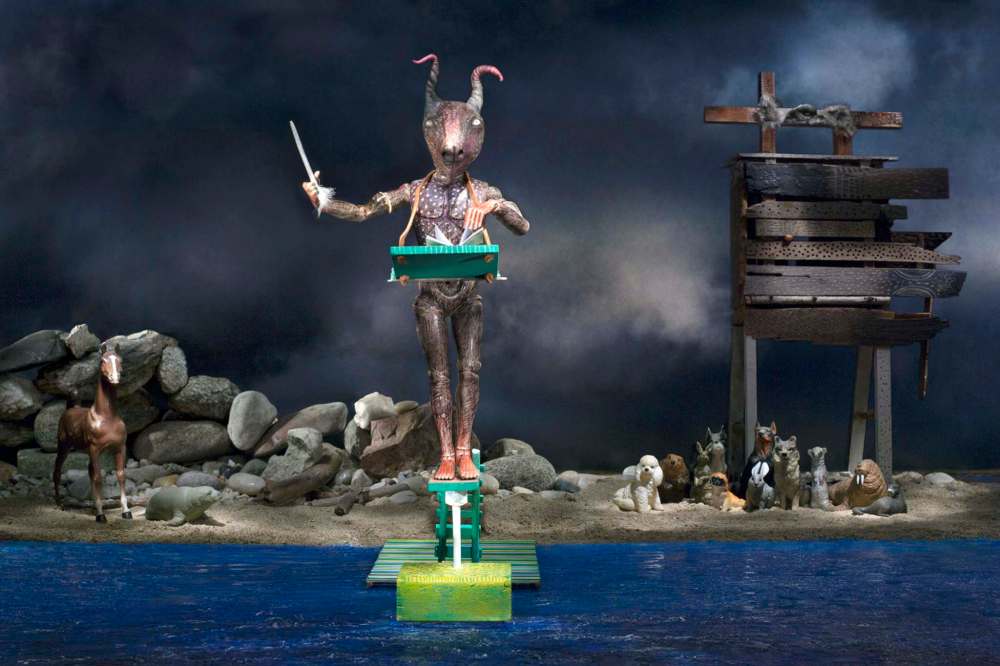
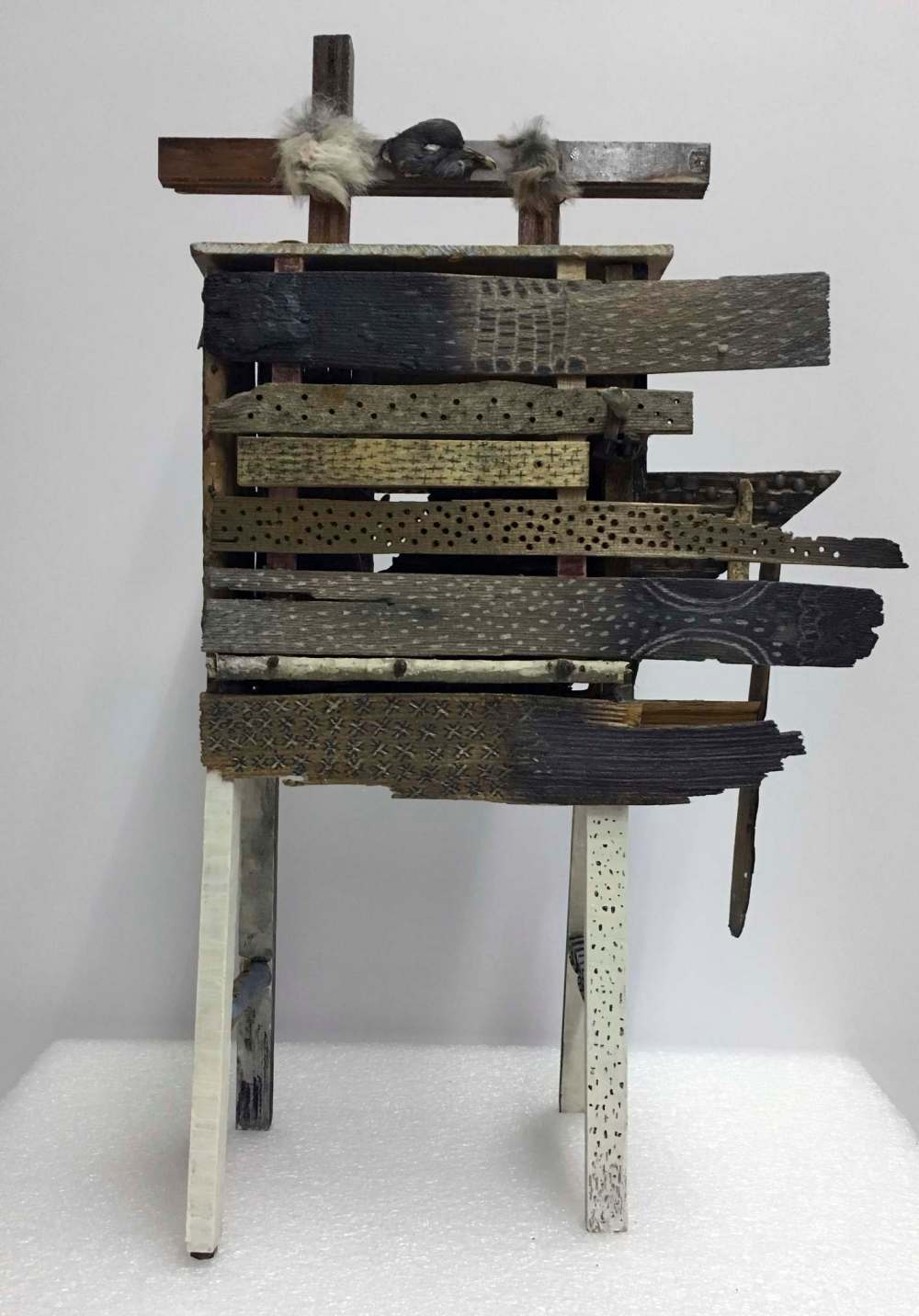
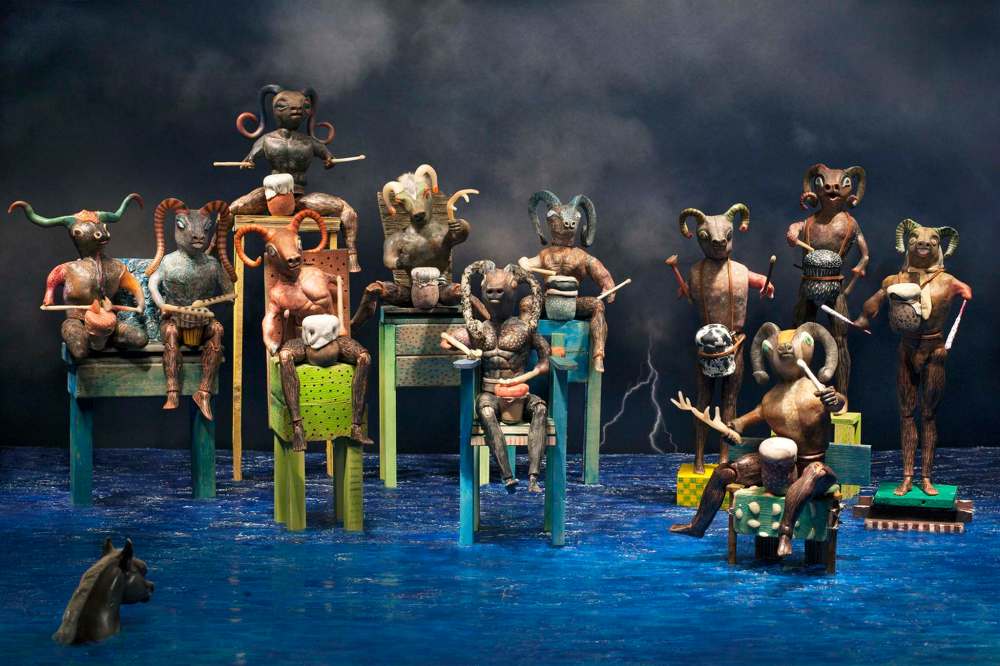
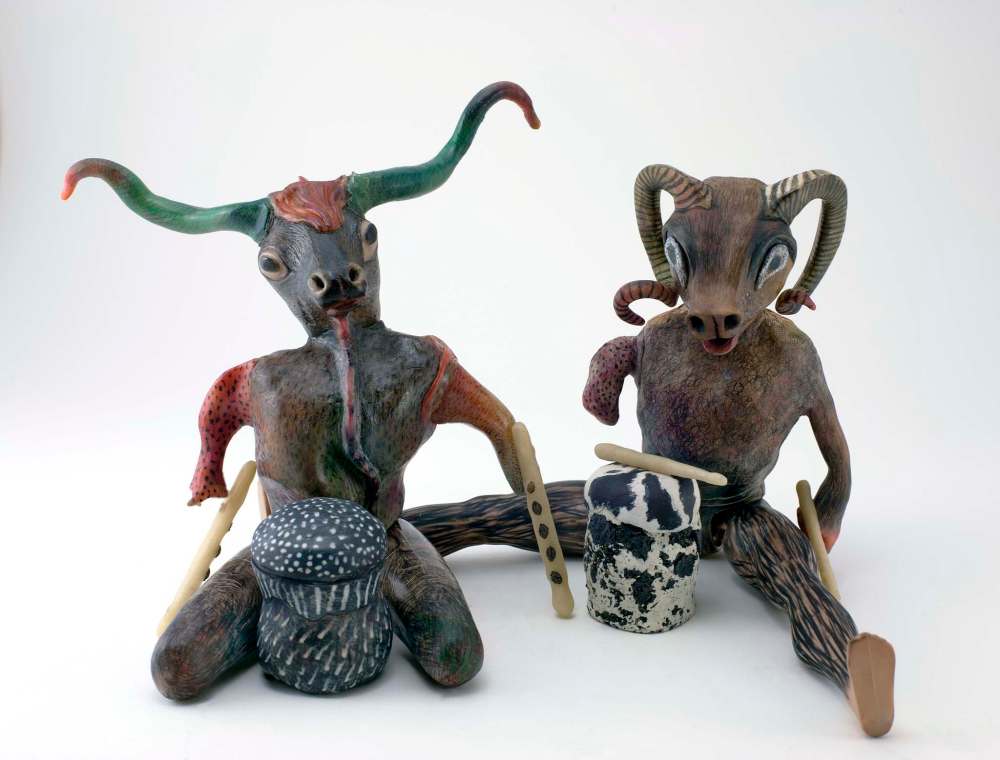
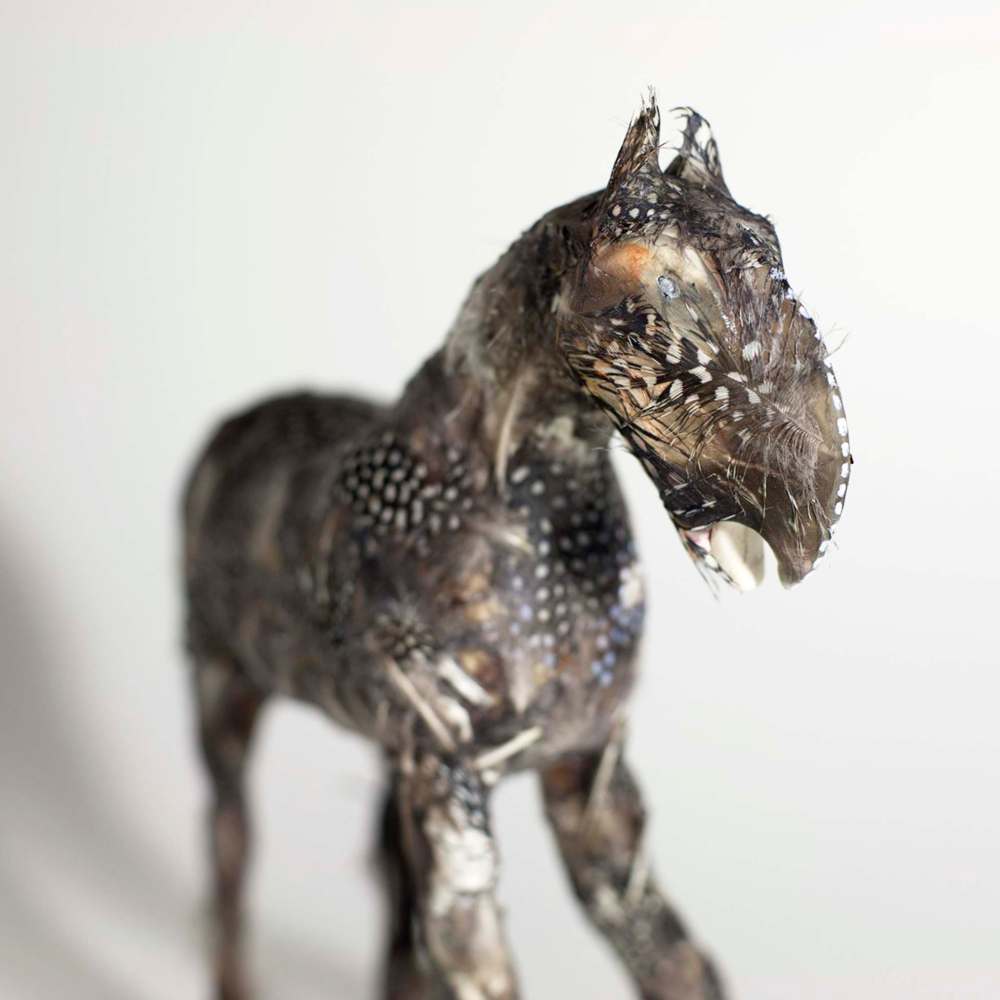

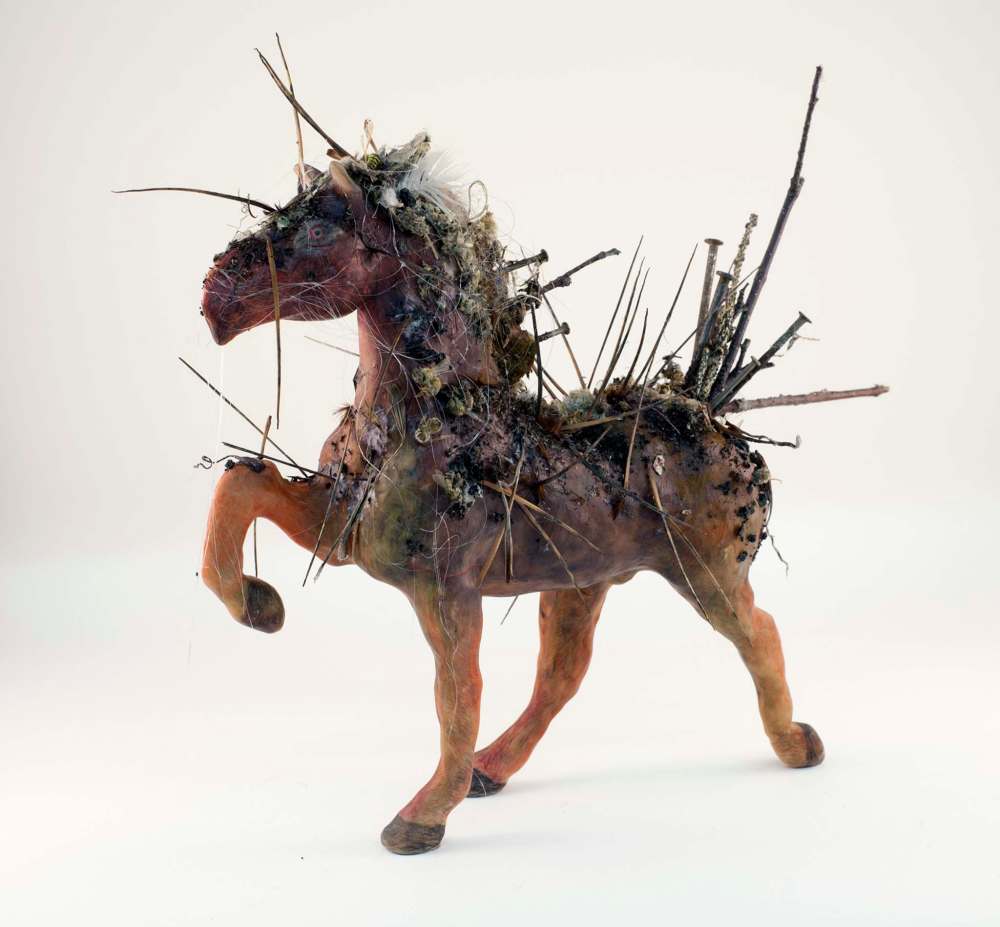
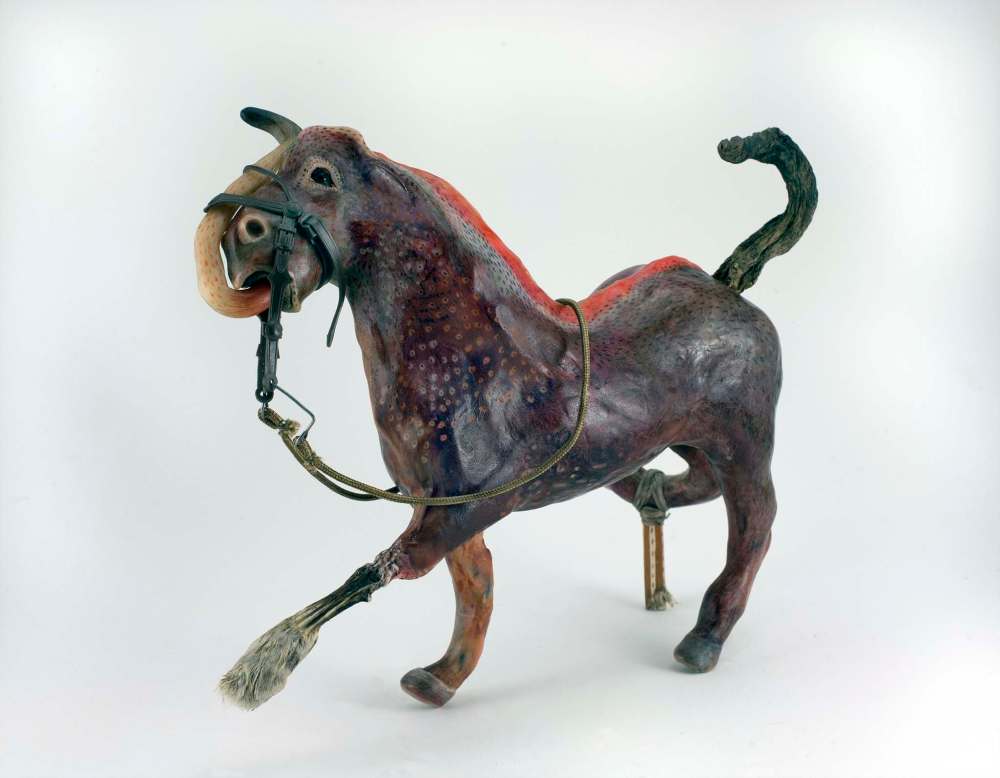
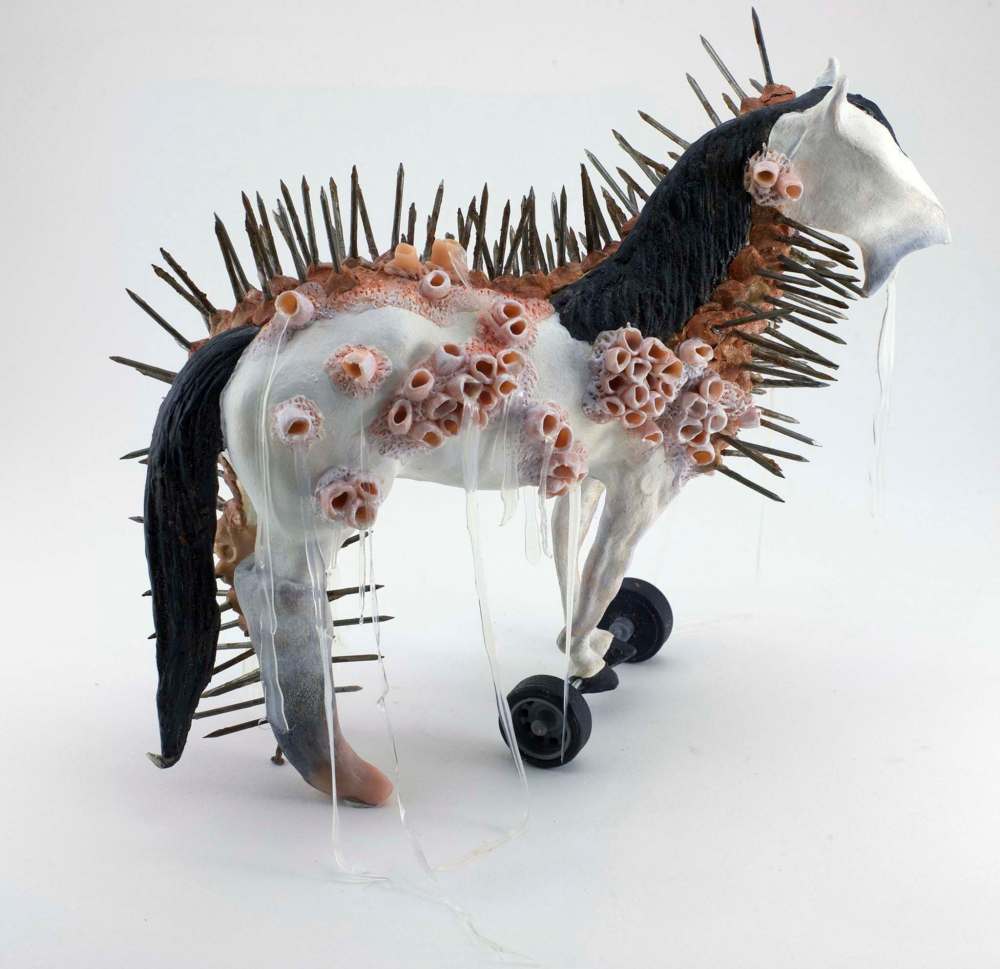

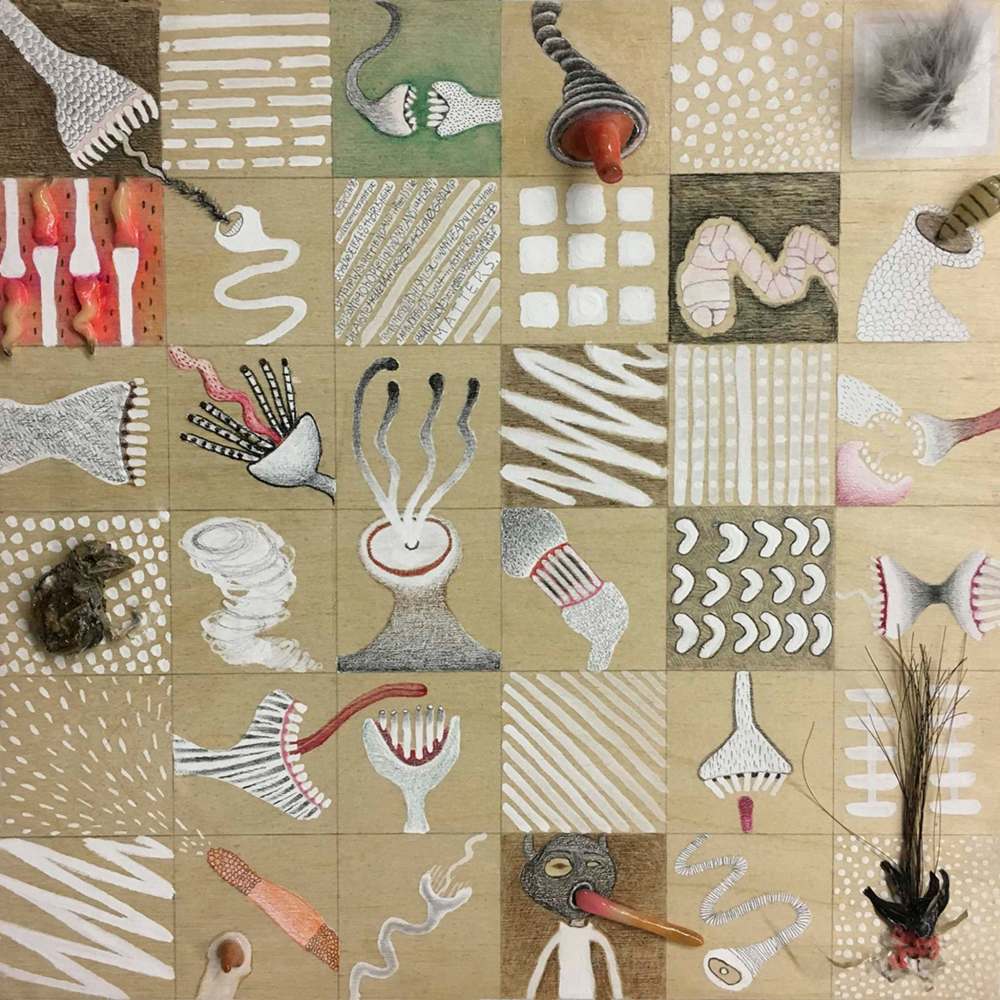

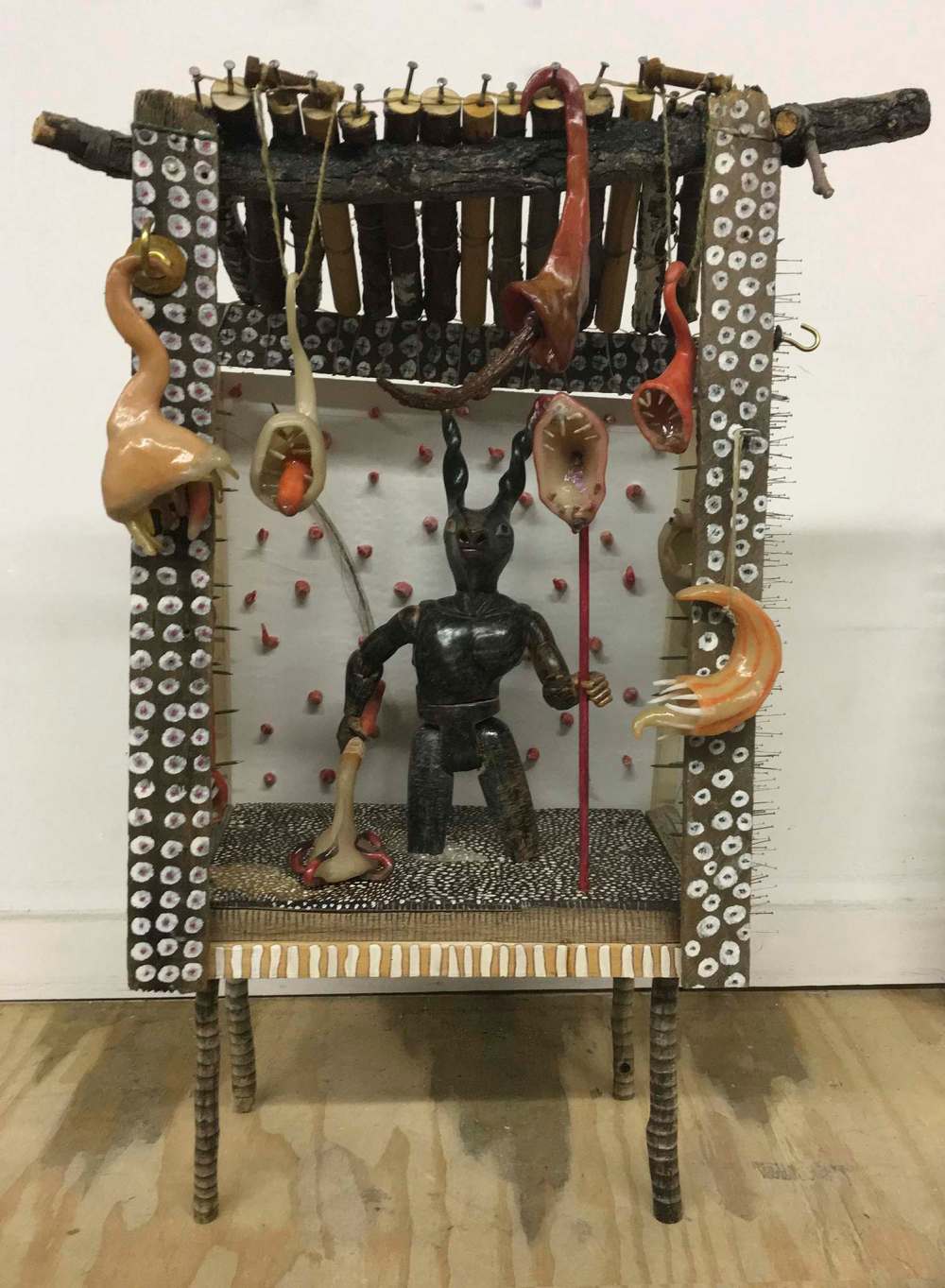
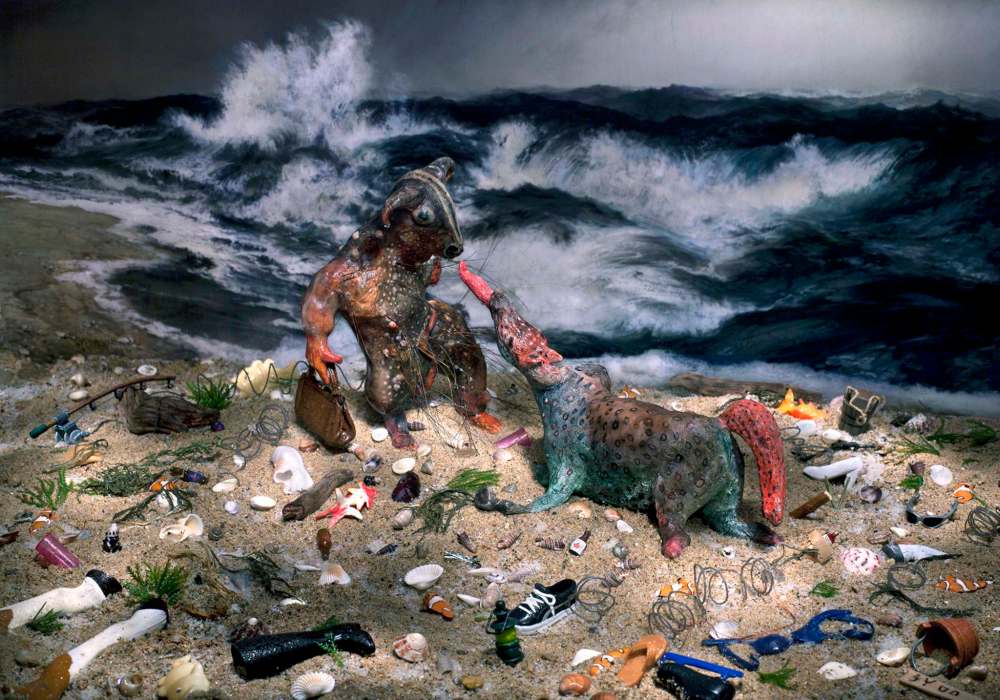
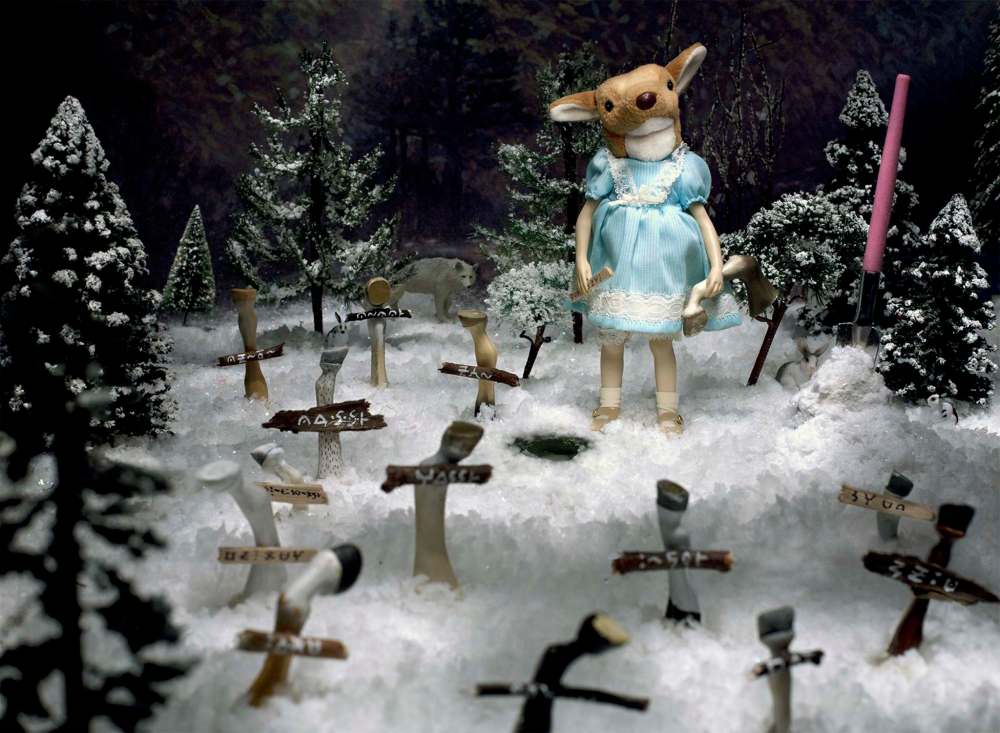

Kittie Wong wears three different hats for the Winnipeg Free Press editorial department: page designer, picture editor and web editor.
Our newsroom depends on a growing audience of readers to power our journalism. If you are not a paid reader, please consider becoming a subscriber.
Our newsroom depends on its audience of readers to power our journalism. Thank you for your support.









